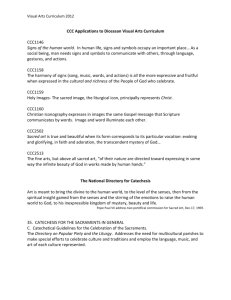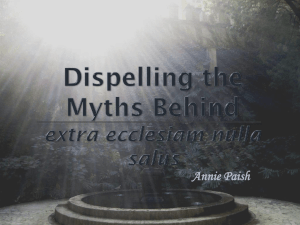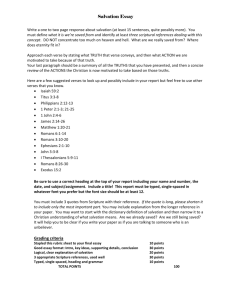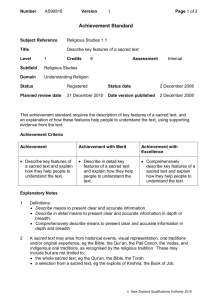Cunningham & Kelsay, Chapter 9: “The Quest for Salvation
advertisement
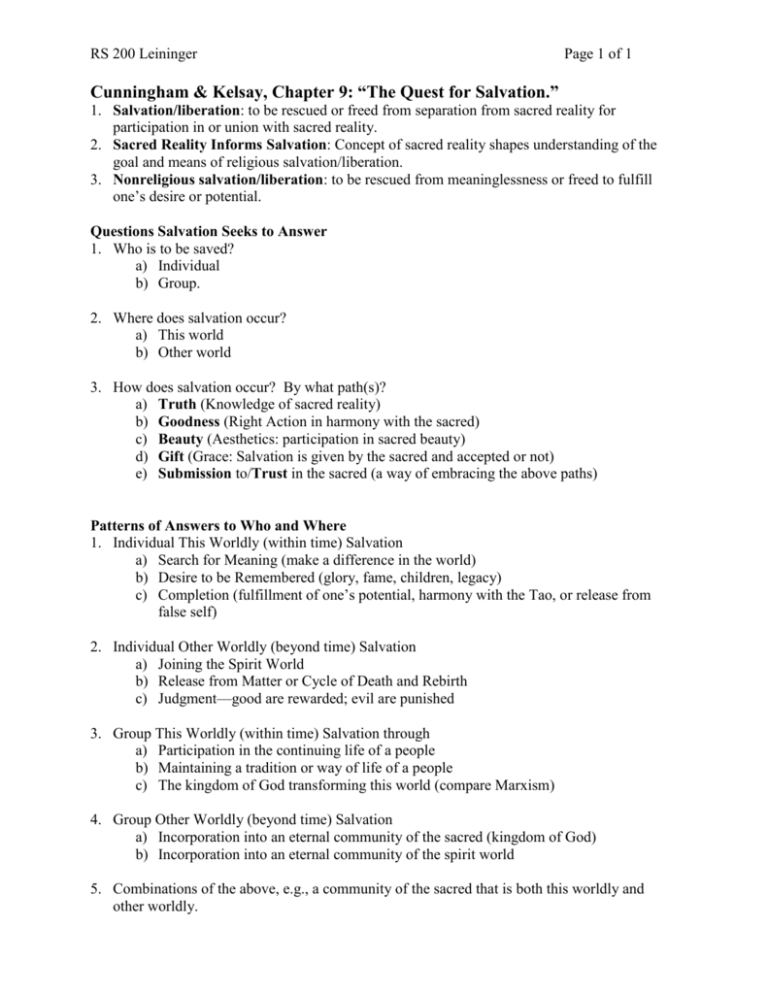
RS 200 Leininger Page 1 of 1 Cunningham & Kelsay, Chapter 9: “The Quest for Salvation.” 1. Salvation/liberation: to be rescued or freed from separation from sacred reality for participation in or union with sacred reality. 2. Sacred Reality Informs Salvation: Concept of sacred reality shapes understanding of the goal and means of religious salvation/liberation. 3. Nonreligious salvation/liberation: to be rescued from meaninglessness or freed to fulfill one’s desire or potential. Questions Salvation Seeks to Answer 1. Who is to be saved? a) Individual b) Group. 2. Where does salvation occur? a) This world b) Other world 3. How does salvation occur? By what path(s)? a) Truth (Knowledge of sacred reality) b) Goodness (Right Action in harmony with the sacred) c) Beauty (Aesthetics: participation in sacred beauty) d) Gift (Grace: Salvation is given by the sacred and accepted or not) e) Submission to/Trust in the sacred (a way of embracing the above paths) Patterns of Answers to Who and Where 1. Individual This Worldly (within time) Salvation a) Search for Meaning (make a difference in the world) b) Desire to be Remembered (glory, fame, children, legacy) c) Completion (fulfillment of one’s potential, harmony with the Tao, or release from false self) 2. Individual Other Worldly (beyond time) Salvation a) Joining the Spirit World b) Release from Matter or Cycle of Death and Rebirth c) Judgment—good are rewarded; evil are punished 3. Group This Worldly (within time) Salvation through a) Participation in the continuing life of a people b) Maintaining a tradition or way of life of a people c) The kingdom of God transforming this world (compare Marxism) 4. Group Other Worldly (beyond time) Salvation a) Incorporation into an eternal community of the sacred (kingdom of God) b) Incorporation into an eternal community of the spirit world 5. Combinations of the above, e.g., a community of the sacred that is both this worldly and other worldly.



